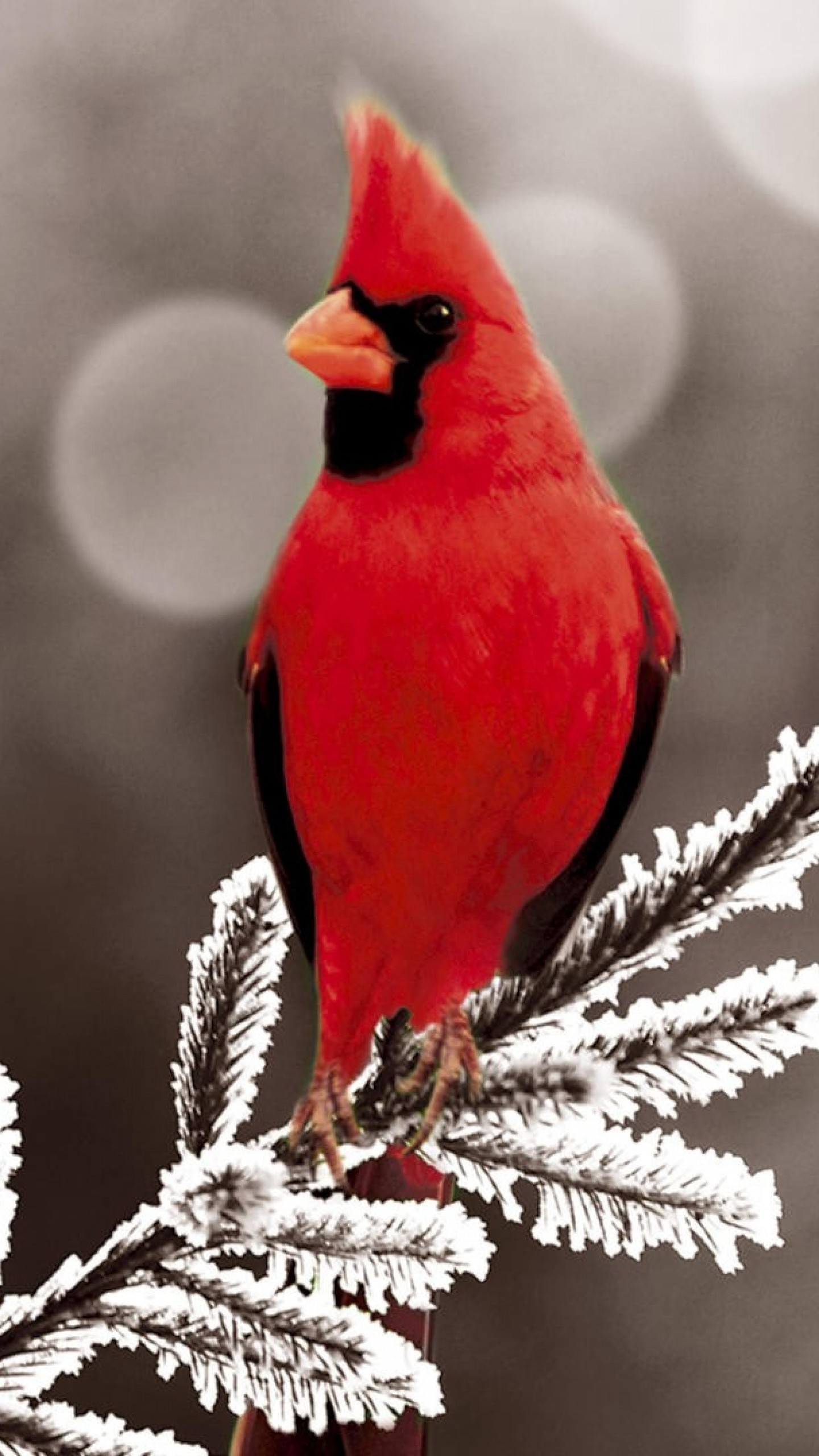
Keep feeders filled even during the stormiest winter days.If there is no food available when cardinals arrive, they may leave and not return.
 Ensure feeders are filled early in the morning and late in the evening, as these birds are often the first and last to visit feeders each day. With more food sources, more birds will enjoy the yard without overcrowding. Add bird feeders to different areas of the yard, so if one feeder is too busy for cardinals to feel comfortable, they have another option for easy feeding. Leaving fallen seed on the ground for a few days can also encourage ground-feeding cardinals to visit. Place a tray, mesh net, or platform beneath hanging feeders or feeders with narrow perches to provide better space for these large songbirds to feed. These birds can be shy and may be spooked by a moving or swinging feeder.
Ensure feeders are filled early in the morning and late in the evening, as these birds are often the first and last to visit feeders each day. With more food sources, more birds will enjoy the yard without overcrowding. Add bird feeders to different areas of the yard, so if one feeder is too busy for cardinals to feel comfortable, they have another option for easy feeding. Leaving fallen seed on the ground for a few days can also encourage ground-feeding cardinals to visit. Place a tray, mesh net, or platform beneath hanging feeders or feeders with narrow perches to provide better space for these large songbirds to feed. These birds can be shy and may be spooked by a moving or swinging feeder. :max_bytes(150000):strip_icc()/red-northern-cardinal-58991bd95f9b5874ee4bcf8f.jpg)
Positioning feeders out of strong winds can also help keep them stable.
Choose larger, heavier feeders that will not sway, or place feeders on sturdy poles rather than hanging them to provide more stability when cardinals are feeding. Nests are not reused but a cardinal pair may raise several broods each year, so providing several pockets of dense cover for nesting can encourage the family to stay nearby each time. Providing nesting material such as small twigs, pine needles, and grass clippings will encourage cardinals to build nests nearby, though they will not use birdhouses. Grapevines, clematis, hawthorn, and dogwood plantings are the best choices for nest sites, as are shrub thickets. Nesting sites: Just as they prefer thick shelter, cardinals also prefer thick cover for nesting. Be sure to include evergreen trees and shrubs such as pines and spruces to provide comfortable winter shelter. Plant cardinal-friendly landscaping in varied layers to provide thick cover at different heights up to 15-20 feet tall. Some of their preferred plants include sumac, mulberry, and blueberry, all of which serve double duty as natural food sources. Thickets of dense vines and shrubs will provide good cover so the birds feel safe and secure. Shelter: Cardinals may have bright plumage, but they prefer discreet, secluded areas for shelter. 
Placing bird baths on the ground is also a good idea, as many cardinals forage on the ground and will stop at the bath for a quick drink.
.jpg)
Because these birds remain in northern areas year-round, heated bird baths are essential for winter water. Adding a dripper or mister to the bath will help attract cardinals' attention to this welcome water source.
Water: Northern cardinals readily visit bird baths for bathing and drinking, and because they are larger songbirds, slightly deeper baths (two-three inches at the deepest point) can be suitable. Platform feeders and large hopper feeders are good choices, but avoid lightweight hanging feeders that only have narrow perches. These foods should be offered in large, wide feeders with plenty of space for birds to perch since small tube feeders are unsuitable for cardinals unless they have a large tray at the bottom. CARDINAL BIRDS CRACKED
Other foods cardinals prefer include cracked corn, peanut pieces, fresh berries, apple chunks, and small pieces, crumbles, or shreds of suet. Food: The northern cardinal's strong, thick bill is perfect for large seeds, and black oil sunflower seeds and safflower seeds are two of their favorites.The Spruce Home Improvement Review Board.



:max_bytes(150000):strip_icc()/red-northern-cardinal-58991bd95f9b5874ee4bcf8f.jpg)

.jpg)


 0 kommentar(er)
0 kommentar(er)
